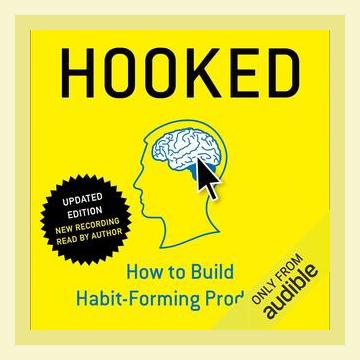Entrepreneurship and StartupsInnovation and CreativityStartup StrategiesTechnological Innovation
**
Introduction
“Hooked: How to Build Habit-Forming Products” by Nir Eyal provides a detailed model designed to help companies build products that capture users’ attention and create unprompted user engagement. The core framework of the book is the “Hook Model,” which describes a four-step process that can drive user habits and facilitate long-term engagement. These steps are: Trigger, Action, Variable Reward, and Investment.
1. Triggers
Triggers are cues that prompt the user to take action. They can be external or internal.
External Triggers
– Examples: Notifications, emails, or advertising.
– Actionable Step: Design notifications that create a sense of urgency and are personalized to the user’s preferences. For instance, Facebook sends specific notifications to re-engage users who haven’t logged in recently.
Internal Triggers
– Examples: Emotions, particularly negative ones like boredom or loneliness.
– Actionable Step: Understand and map out the internal triggers for your target audience. For example, Instagram leverages internal triggers by targeting feelings of envy with a feed that showcases the exciting lives of others.
Concrete Example from the Book: The author discusses how Instagram uses boredom (an internal trigger) and push notifications (an external trigger) to drive users to open the app and engage with the content.
2. Actions
This involves the simplest behavior in anticipation of a reward. The easier the action, the more likely it is to be performed.
Fogg Behavior Model
– Examples: Clicking a like button, scrolling a feed.
– Actionable Step: Simplify the core action and remove barriers. For example, Twitter’s process of tweeting is extremely simple, requiring only a few seconds and minimal effort.
Concrete Example from the Book: The book explains how Pinterest makes it easy for users to pin images in just a few clicks, driving continuous engagement.
3. Variable Rewards
Rewards need to be unpredictable to sustain user interest and engagement. The anticipation of a reward that varies keeps users hooked.
Types of Variable Rewards
– The Tribe: Social rewards like likes, comments, and shares.
– The Hunt: Rewards of the hunt, such as finding new information or products.
– The Self: Rewards of the self, like achievements and personal satisfaction.
Actionable Step: Incorporate unpredictability into rewards. For example, Slotomania uses variable rewards by simulating slot machine mechanics, keeping players engaged through the unpredictability of each spin.
Concrete Example from the Book: LinkedIn creates “The Tribe” type rewards by endorsing skills and offering opportunities for professional connections, which are rewarding and unpredictable.
4. Investment
This step involves the user putting something into the product, which increases the likelihood of returning. Investments can be data, content, reputation, etc.
Types of Investment
– Data: Personal information that tailors the user experience (i.e., Spotify’s music preferences).
– Content: Contributions like tweets, posts, etc.
– Reputation: Building a professional online presence (i.e., LinkedIn endorsements).
– Skill Acquisition: Learning a new skill with usage (i.e., language skills on Duolingo).
Actionable Step: Design features that encourage users to invest in the product. For instance, allowing users to create wish lists on Amazon makes them more likely to return.
Concrete Example from the Book: The author describes how users of the iPhone invest in the ecosystem by downloading apps, which makes them more likely to continue using Apple products.
The Hooked Model in Action
To illustrate the entire Hook model, let’s take the example of Facebook.
- Trigger: An external trigger would be a notification of a friend’s post; an internal trigger could be the boredom that a user feels.
- Action: The user opens the app and starts scrolling through the feed.
- Variable Reward: The user’s feed is filled with likes, comments, and posts from friends (The Tribe), news updates (The Hunt), and various achievements (The Self).
- Investment: The user likes, comments, shares, or posts something, ensuring a return to the app to see the reactions and engagement.
Applying the Hook Model
To effectively apply the Hook Model, incorporate all four aspects into your product strategy:
- Identify Triggers: Recognize both internal and external triggers for your target audience.
- Facilitate Easy Actions: Simplify tasks to encourage user engagement effortlessly.
- Incorporate Variable Rewards: Use unpredictability to keep users returning.
- Encourage Investment: Get users to invest in the service in a way that grows over time, ensuring they return.
Concrete Actions to Take:
– Conduct user research to understand internal triggers.
– Streamline user actions to reduce friction.
– Design variable rewards that are surprising and delightful.
– Develop mechanisms for users to invest their time, data, or efforts.
Final Thoughts
Eyal emphasizes the ethical considerations of building habit-forming products. It’s important that products empower users and add value to their lives rather than exploit them. Ethical product-making emphasizes user well-being alongside engagement metrics.
Conclusion
“Hooked” provides a practical and insightful framework for building products that users will habitually engage with. By applying the steps of Triggers, Actions, Variable Rewards, and Investment, businesses can create impactful, meaningful, and lasting user experiences. The book also highlights the importance of ethical considerations in product development, ensuring that the pursuit of engagement does not come at the expense of user welfare.
Entrepreneurship and StartupsInnovation and CreativityStartup StrategiesTechnological Innovation
